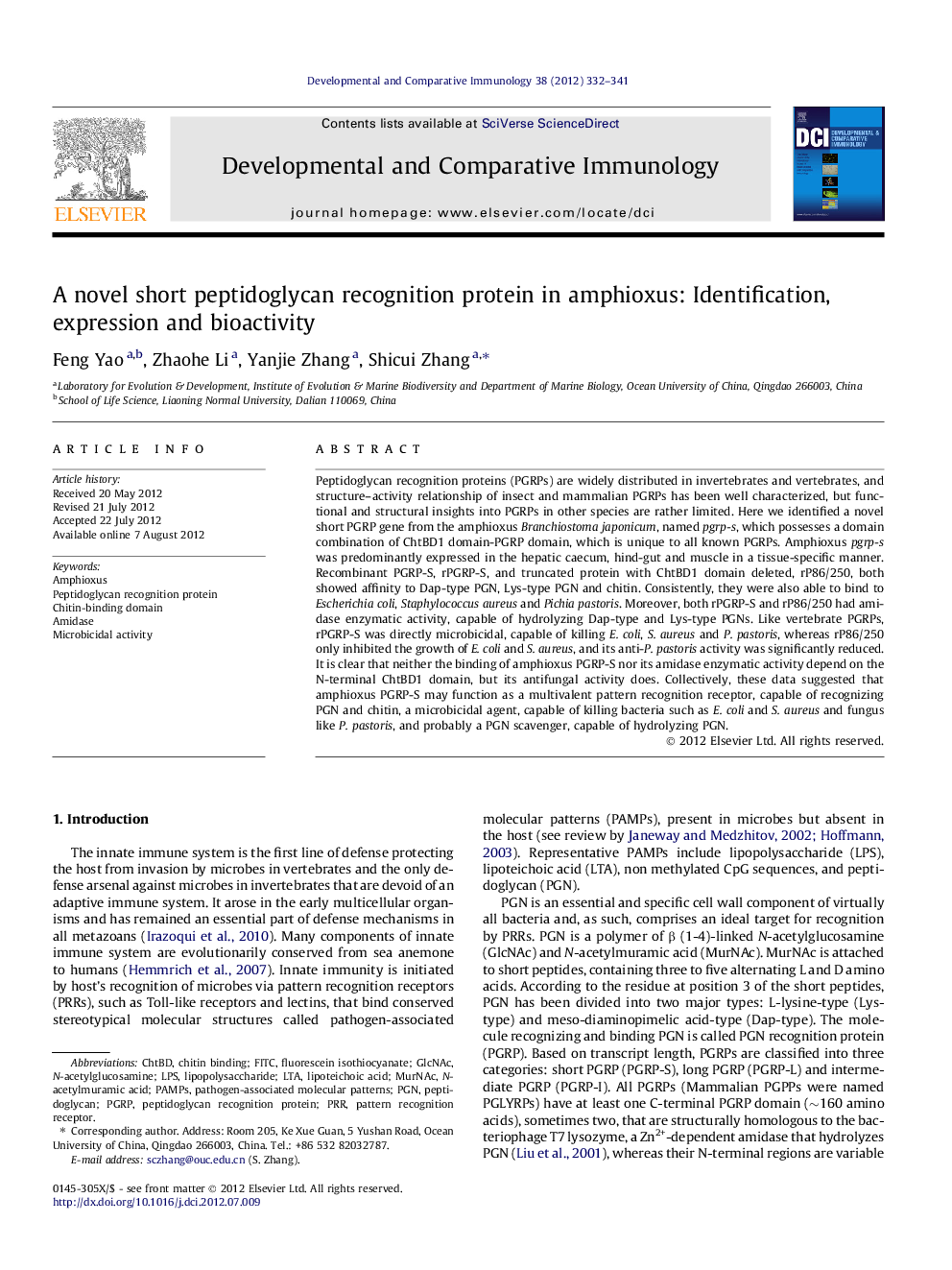| Article ID | Journal | Published Year | Pages | File Type |
|---|---|---|---|---|
| 2429498 | Developmental & Comparative Immunology | 2012 | 10 Pages |
Peptidoglycan recognition proteins (PGRPs) are widely distributed in invertebrates and vertebrates, and structure–activity relationship of insect and mammalian PGRPs has been well characterized, but functional and structural insights into PGRPs in other species are rather limited. Here we identified a novel short PGRP gene from the amphioxus Branchiostoma japonicum, named pgrp-s, which possesses a domain combination of ChtBD1 domain-PGRP domain, which is unique to all known PGRPs. Amphioxus pgrp-s was predominantly expressed in the hepatic caecum, hind-gut and muscle in a tissue-specific manner. Recombinant PGRP-S, rPGRP-S, and truncated protein with ChtBD1 domain deleted, rP86/250, both showed affinity to Dap-type PGN, Lys-type PGN and chitin. Consistently, they were also able to bind to Escherichia coli, Staphylococcus aureus and Pichia pastoris. Moreover, both rPGRP-S and rP86/250 had amidase enzymatic activity, capable of hydrolyzing Dap-type and Lys-type PGNs. Like vertebrate PGRPs, rPGRP-S was directly microbicidal, capable of killing E. coli, S. aureus and P. pastoris, whereas rP86/250 only inhibited the growth of E. coli and S. aureus, and its anti-P. pastoris activity was significantly reduced. It is clear that neither the binding of amphioxus PGRP-S nor its amidase enzymatic activity depend on the N-terminal ChtBD1 domain, but its antifungal activity does. Collectively, these data suggested that amphioxus PGRP-S may function as a multivalent pattern recognition receptor, capable of recognizing PGN and chitin, a microbicidal agent, capable of killing bacteria such as E. coli and S. aureus and fungus like P. pastoris, and probably a PGN scavenger, capable of hydrolyzing PGN.
► We identified a novel short PGRP gene with a ChtBD1 domain from amphioxus. ► Amphioxus PGRP-S is a PRR capable of recognizing PGN and chitin. ► Amphioxus PGRP-S had amidase enzymatic activity. ► Amphioxus PGRP-S is a microbicidal agent capable of killing both bacteria and fungi.
